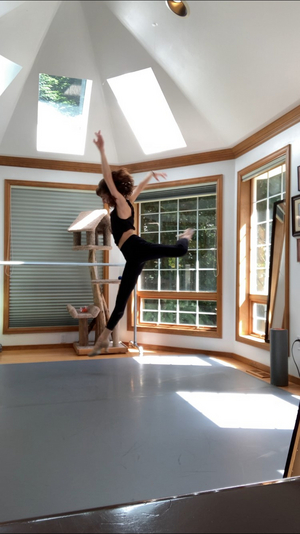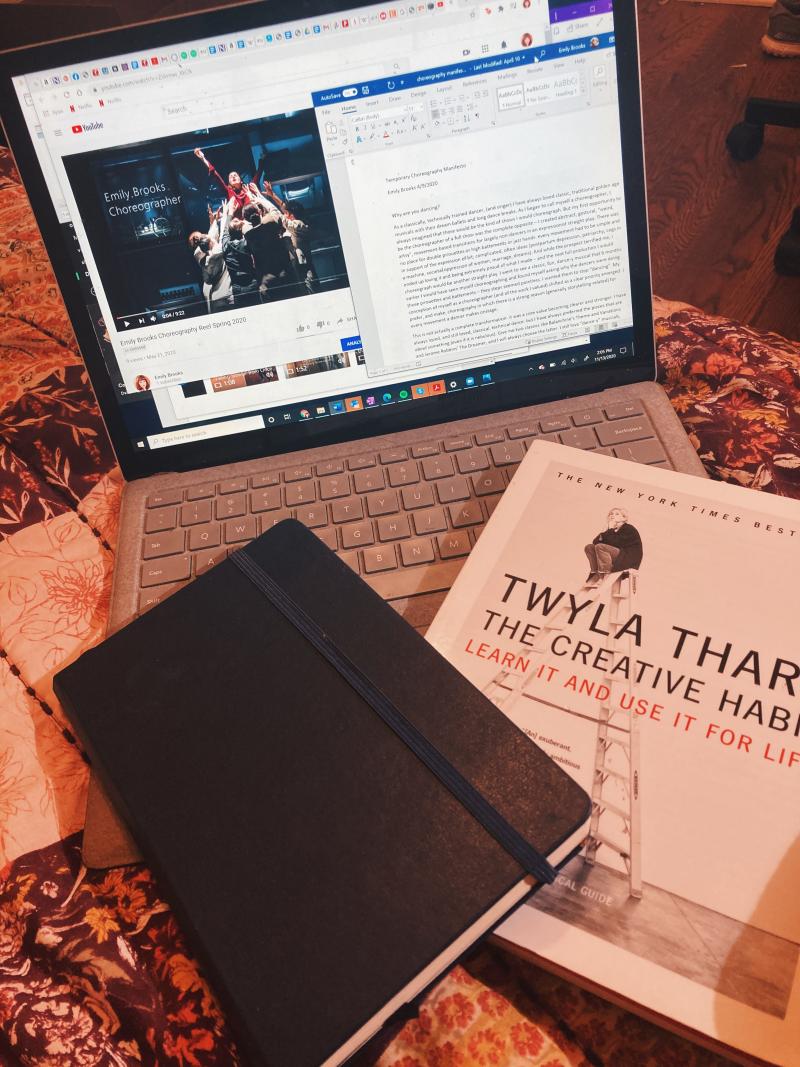BWW Blog: Choreography in a Time of COVID, Part 2 – Do Your Homework!
Even this less-than-ideal moment can offer unique opportunities for growth and inspiration as a dancemaker.

a dance class can also be a choreography class.
Zooming into Emmy-winner Al Blackstone's
NYC-based classes from my home
across the country in Seattle
was a highlight of my summer!
As I wrote a few weeks ago in Choreography in a Time of COVID - Part 1, the months since Covid-19 shut down the performing arts as we know it have shown me the many surprising ways choreography can still exist, with a little creativity. As I've continued to find my voice as a choreographer in a moment without live theatre, I've also discovered the unique opportunities this time can offer for "doing your homework" as a developing choreographer -- but don't worry, it doesn't involve any exams! While choreography might feel like an inherently learn-on-your-feet art form, there is much valuable work toward choreographic growth to be done sitting at a laptop (a position we've become particularly familiar with over the last months). With some extra time on our hands and more accessible online resources than ever, it's a surprisingly perfect moment for learning from choreographic greats and developing our own identity as dancemakers.
Many brilliant choreographers have written about dance, the creative process, and choreography (techniques, principles, tips and more), and now is a great time to sit down with a book and glean from their wisdom. Great starting points include Twyla Tharp's The Creative Habit, Robert Berkson's Musical Theatre Choreography, Liz Lerman's Critical Response Process, Margot Sutherland and Ken Pickering's Choreographing the Stage Musical, and Lin Blom and L. Tara Chapman's The Intimate Act of Choreography. A quick google search of any other choreographer who inspires you can also point you to any writings or interviews they've offered, often providing invaluable advice and insights on their journeys and creative process (a personal favorite is this interview with Crystal Pite about storytelling).
In addition, we have access to a vast array of performance video at our fingertips online, especially with the wealth of content that has been released over the last few months. Spending time watching the work of the greats is always inspiring and educational, especially as you discover specific choreographers or styles who resonate with you, and in whose lineage you might see your own work. For musical theatre choreography, YouTube offers a wealth of material for free, and streaming services (from Netflix to the theatre-specific BroadwayHD) offer a variety of movie musicals and filmed stage productions. Even if you hope to create dances primarily for the theatre, watching concert dance can be worthwhile too: it offers lessons on more technical principles of movement and vocabulary, fantastic storytelling is often present, and many of the best dancemakers (such as Jerome Robbins, Christopher Wheeldon, Justin Peck, and Crystal Pite) work on both concert dance and theatrical stages. A fantastic array of concert dance has been released online over the past several months, including fully digital seasons from leading companies like New York City Ballet and Pacific Northwest Ballet. Dancing Alone Together offers a fantastic database of both dance to watch, and dance classes to take, online.

through work like reading, writing, or making a reel--
doesn't have to happen on your feet at all!
While we miss taking dance classes in studios, this new online format also provides a unique opportunity as choreographers to take class directly from some of these great dancemakers themselves -- from anywhere in the world! Studios like Broadway Dance Center and Steps on Broadway have Tony- and Emmy- winning choreographers on their faculty, and learning their choreography straight from them can teach us a lot, as we become familiar with different choreographic vocabularies, see what resonates with us, and pick up what we love.
All of these activities can be especially fun and informative when taken on with friends: agree to watch the same film, read the same book, or take the same class, and then come together (virtually) to discuss it!
Equipped with the knowledge and inspiration these sources can provide, now can also be a great time to begin to crystallize your identity as a choreographer and prepare to enter the industry. Even if right now it is for your eyes only, writing an artist statement/manifesto can be an extremely illuminating process of reflection, as you consider: what kind of art do you want to put in the world? Are aspects of your background, identity, or beliefs particularly important to your work? What do you value most in choreography, and what do you consider to be its primary purpose? Bring in discoveries from the homework above: which choreographers are your favorites and why? What in their work resonates with and inspires you? How do you want to embody what you consider the best aspects of their work?
Tackle some logistics as well: create a resume of choreographic experience, and a reel of examples of movement you've created (simply stitch together a few videos- no advanced tech skills required). As an emerging artist, there's no need to rush to put these things out into the world, but next time a choreographic opportunity wants to know about you and your work, you'll be ready! And reflecting on the dances you've made and the way you think about dance-making can help you make new discoveries about yourself and your developing choreographic voice.
Special thanks to Northwestern University's Jeff Hancock, whose incredible Music Theatre Choreography course inspired many of the "homework" activities I discussed!
Comments
Videos


